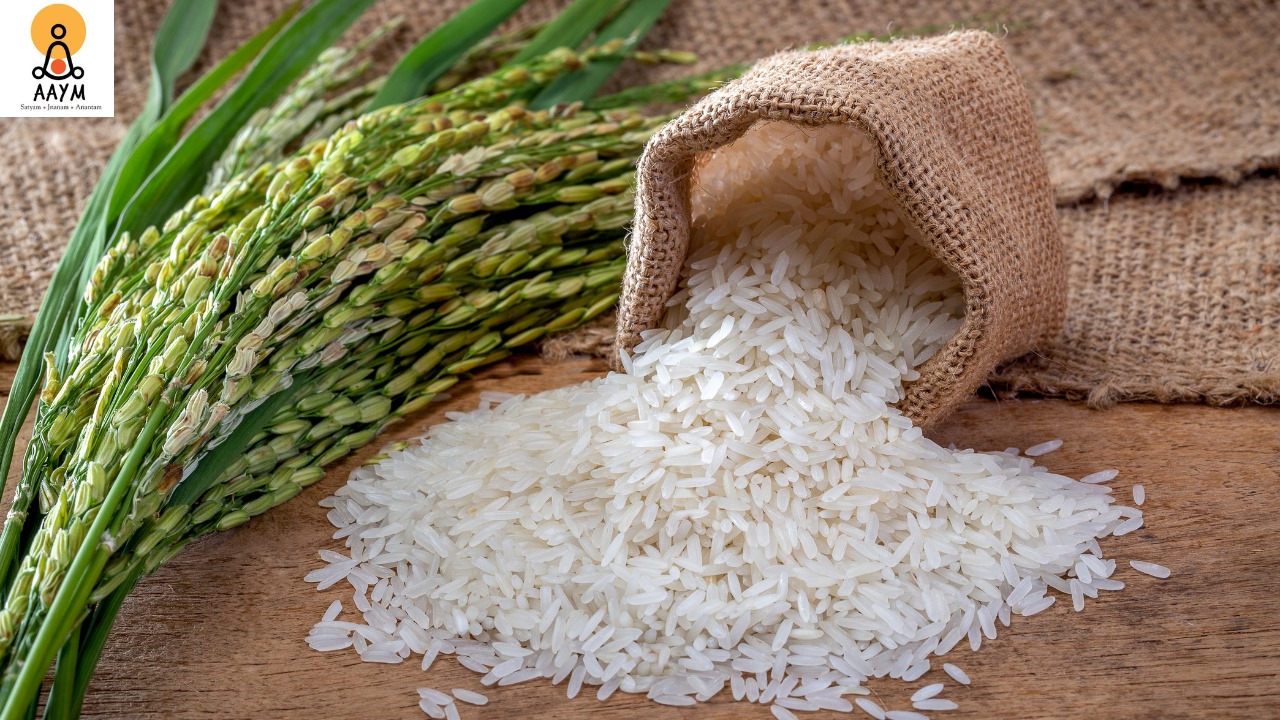Let’s talk about rice. I know—it’s the first thing most people cut out when they decide to lose weight. Why? Because it’s full of carbs, right? But here’s the thing: you don’t need to abandon rice to shed those extra kilos completely! Rice can still be part of your weight-loss plan when eaten correctly without throwing everything off balance.
So, before you say goodbye to your favorite comfort food forever, let’s dive into how you can keep rice in your diet without sabotaging your goals.
1. Choose Whole Grains Over White Rice
If you’re considering making rice a regular part of your diet, one small swap can make a huge difference—go for whole grains like brown rice. Why? It’s simple. Brown rice still has its bran and germ, which means it’s loaded with fiber, vitamins, and minerals that white rice doesn’t have after processing. Studies even show that whole grains help with digestion and keep you fuller for longer. That means less snacking, fewer cravings, and a happier tummy! Red or black rice is richer in antioxidants if you want to mix things up.
2. Control Those Portions
Here’s the truth: portion control is your best friend regarding rice. You don’t need to fill half your plate with it! Instead, aim for half to one cup of cooked rice per meal. Trust me, it’ll be enough. When you balance that out with other nutrient-dense foods, you’ll still get the satisfaction of eating rice without going overboard on calories.
3. Add Some Protein and Veggies
Want to make rice work even better for you? Pair it with veggies and protein! When you combine rice with foods like beans, chicken, or tofu, you balance the meal and slow down digestion, keeping you full for longer. Plus, adding veggies bulk up the meal without adding extra calories. This is where dishes like veggie stir-fry or rice with chickpeas shine. The protein helps you stay energized, and the fiber keeps you from feeling hungry an hour later.
4. Cook It the Right Way
We all love fried rice, but let’s be honest—frying rice in oil adds unnecessary calories. Stick to boiling or steaming your rice. And if you’re craving something like biryani or pulao, just go easy on the oil. Trust me, your waistline will thank you. Using healthier oils like olive oil can make a difference without sacrificing flavor.
5. Pair Rice with Fiber-Rich Foods
Want to get even more out of your rice? Serve it with high-fiber sides like salads or steamed veggies. Fiber helps slow down digestion and keeps you full for longer. It’s the perfect trick for ensuring your rice-based meal doesn’t leave you reaching for a snack an hour later.
6. Choose Lower Glycemic Index (GI) Rice
Not all rice is created equal. Some types, like basmati rice, have a lower GI, meaning they don’t cause a sharp spike in your blood sugar levels. This is especially great if you’re watching your carb intake or have diabetes. According to research, basmati rice has a GI of less than 55, putting it in the “good” carb category. So you can enjoy it without worrying about those dreaded sugar spikes.
7. Mix It Up with Other Grains
Who says you can’t have a little variety in your meals? Try mixing your rice with grains like quinoa or barley. Both are high in protein and fiber and add a fun twist to your regular meals. Plus, it’s a great way to enhance the nutrition profile of your dish while keeping things interesting!
8. Stay Hydrated
Here’s a tip you might not consider: drink plenty of water while eating rice. Sometimes, rice can make you feel bloated or dehydrated, so staying hydrated is vital to keeping your digestion on track. It’s a simple trick that makes a big difference!
9. Eat Rice at the Right Time
Timing is everything when it comes to carbs. If you’re going to eat rice, aim to have it earlier in the day, like at lunch. Carbs consumed earlier are more likely to be used for energy than stored as fat. Eating rice at lunchtime gives your body the whole day to burn it off. That way, you avoid that sluggish, heavy feeling that sometimes comes after a big dinner. It’s all about strategy!
10. Keep a Balanced Diet
I can’t stress this enough—balance is the key to sustainable weight loss. Yes, rice can be part of that balance! The trick is to ensure you get the right ratio of carbs, protein, and healthy fats in your meals. Generally, you want 45-65% of your daily calories to come from carbs, 10-35% from protein, and 20-35% from fats. So, if you’re enjoying rice, ensure the rest of your meal complements it with lean proteins and healthy fats.
11. Match It to Your Activity Levels
If you’re active, you’ll need more carbs for energy—rice can be an excellent source of that. But if you’re living a more sedentary lifestyle, focus on a lower-carb, higher-protein diet to maintain muscle mass while keeping your calorie intake in check. Your lifestyle should guide how much rice you can include without affecting your weight loss journey.
Final Thoughts
The bottom line? You don’t need to ditch rice completely to lose weight. It’s all about making smart choices—opting for whole grains, controlling your portions, and balancing your meals with fiber and protein. Keep these tips in mind, and you’ll be able to enjoy rice without feeling like you’re compromising your progress.
Remember, weight loss is not about cutting out everything you love—it’s about learning how to enjoy those foods healthier and more balanced. Rice can still be your friend on this journey, as long as you’re mindful about including it in your diet.

